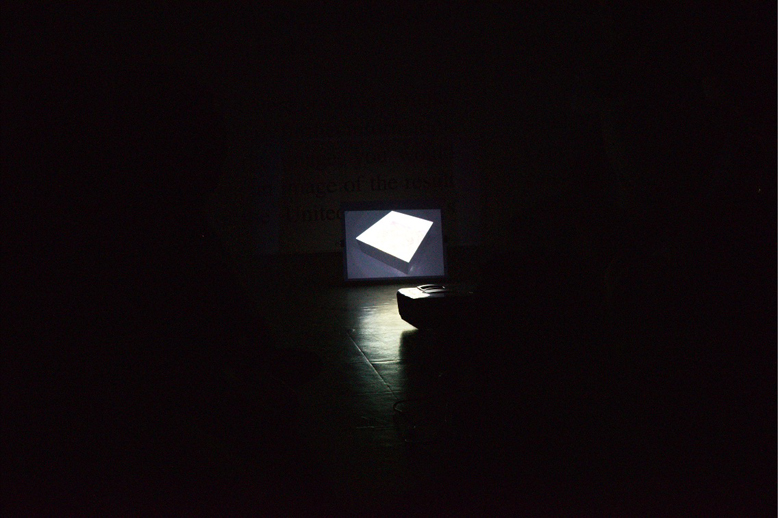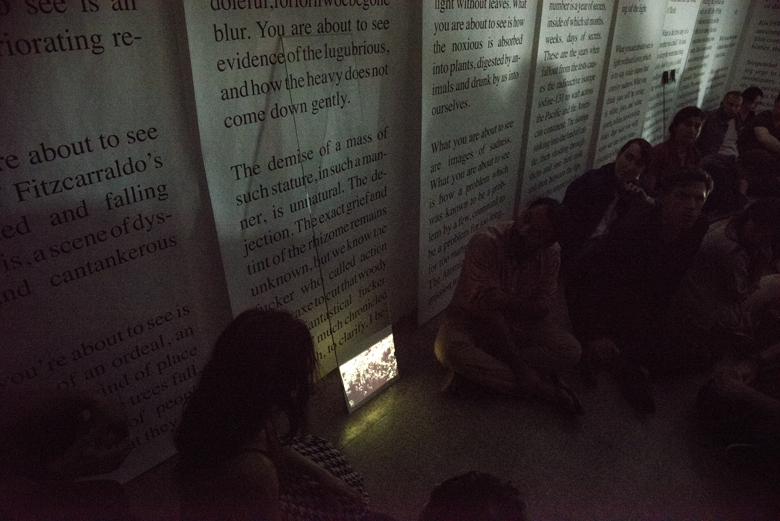SAD PROBLEMS #17, #18, #19, #20 (2015)
Performance, Metro PCS Gallery, Los Angeles,
Sound by Steve Kado
The performance narrates four events (each a ‘sad problem’ from recent history) when environmental degradation coalesced into an image. By contrasting these episodes the performance developed a narrative between iconic yet diverse images of the environmental movement, from the destruction of the Amazon rainforest to the effects of nuclear testing on civilian populations, to the costs of disposing of nuclear waste.


Sad Problem #17
In 1946 some Kodak film developed with a mysterious ‘fog’ in the image. It was discovered that corn husks used to package the film during shipping were contaminated with the radioactive isotope iodine-131. The source was discovered to be fallout from the Trinity atomic bomb test, and the radioactivity was at such high levels at the Indiana farms from which the corn husks derived that the film was partially exposed during transportation.
Sad Problem #18
Spilt light: Fallout from the radioactive isotope iodine-131 became widely dispersed across the American continent. As early as 1953, the isotope I-131 sank into the feed of cattle and then appeared in the milk pathway so affecting the populace and leading to an estimated seventy-five thousand cases of thyroid cancer.
Sad Problem #19
In the United Kingdom in 1972 a particularly cold winter coincided with a major miners’ strike. Electricity usually generated by coal had to be replaced with nuclear power generation. In order to avoid power outages across the UK, Sellafield nuclear plant was run to nearly beyond operational capacity. During this time the nuclear waste being generated could not be disposed of thoroughly. Instead the used nuclear fuel rods were cast into the cooling ponds and left to disintegrate. Today, although the Sellafield nuclear fuel reprocessing plant is a decommissioned site, the cooling ponds remain the most toxic bodies of water in Europe.
Sad Problem #20
In 1982, centuries old trees were cut down in the Andes in the Amazon Basin in Peru as part of the now infamous filming of Werner Herzog’s iconic film Fitzcarraldo. Each frame of these scenes of falling trees is represented as a slide.
